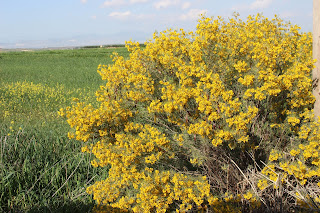 Senna artemisioides is a flowering plant in the family Fabaceae. It is commonly known as silver senna, silver cassia or feathery cassia - although "cassia" generally refers to the largest-growing Cassiinae. Some of its distinct subspecies also have common names of their own. This plant is endemic to Australia, where it is found in all mainland states and territories, except for Victoria.
Senna artemisioides is a flowering plant in the family Fabaceae. It is commonly known as silver senna, silver cassia or feathery cassia - although "cassia" generally refers to the largest-growing Cassiinae. Some of its distinct subspecies also have common names of their own. This plant is endemic to Australia, where it is found in all mainland states and territories, except for Victoria. This is a shrub that grows up to 3 metres in height. It has pinnate leaves with between 1 and 8 pairs of leaflets. It produces an abundance of yellow flowers in winter and spring which are about 1.5 cm in diameter, followed by 2 to 7 cm long flat green pods which age to dark brown.
This is a shrub that grows up to 3 metres in height. It has pinnate leaves with between 1 and 8 pairs of leaflets. It produces an abundance of yellow flowers in winter and spring which are about 1.5 cm in diameter, followed by 2 to 7 cm long flat green pods which age to dark brown.The species adapts to a wide range of climatic conditions, although it is susceptible to frost, particularly when young. It prefers dry, well drained sites with full sun. As an ornamental plant, it is propagated readily from seed, which should first be soaked in boiling water.
This plant has gained the Royal Horticultural Society's Award of Garden Merit.
The species was first described in 1825 by Charles Gaudichaud-Beaupré based on work by Augustin Pyramus de Candolle and placed in Cassia, but nowadays it has been moved to Senna. However, for a long time this plant was erroneously known as Cassia eremophila which is a true species of Cassia called Desert Cassia, described by Julius Rudolph Theodor Vogel.
From Wikipedia, the free encyclopedia
Photos Potamia 20/2/2016 by George Konstantinou




No comments:
Post a Comment